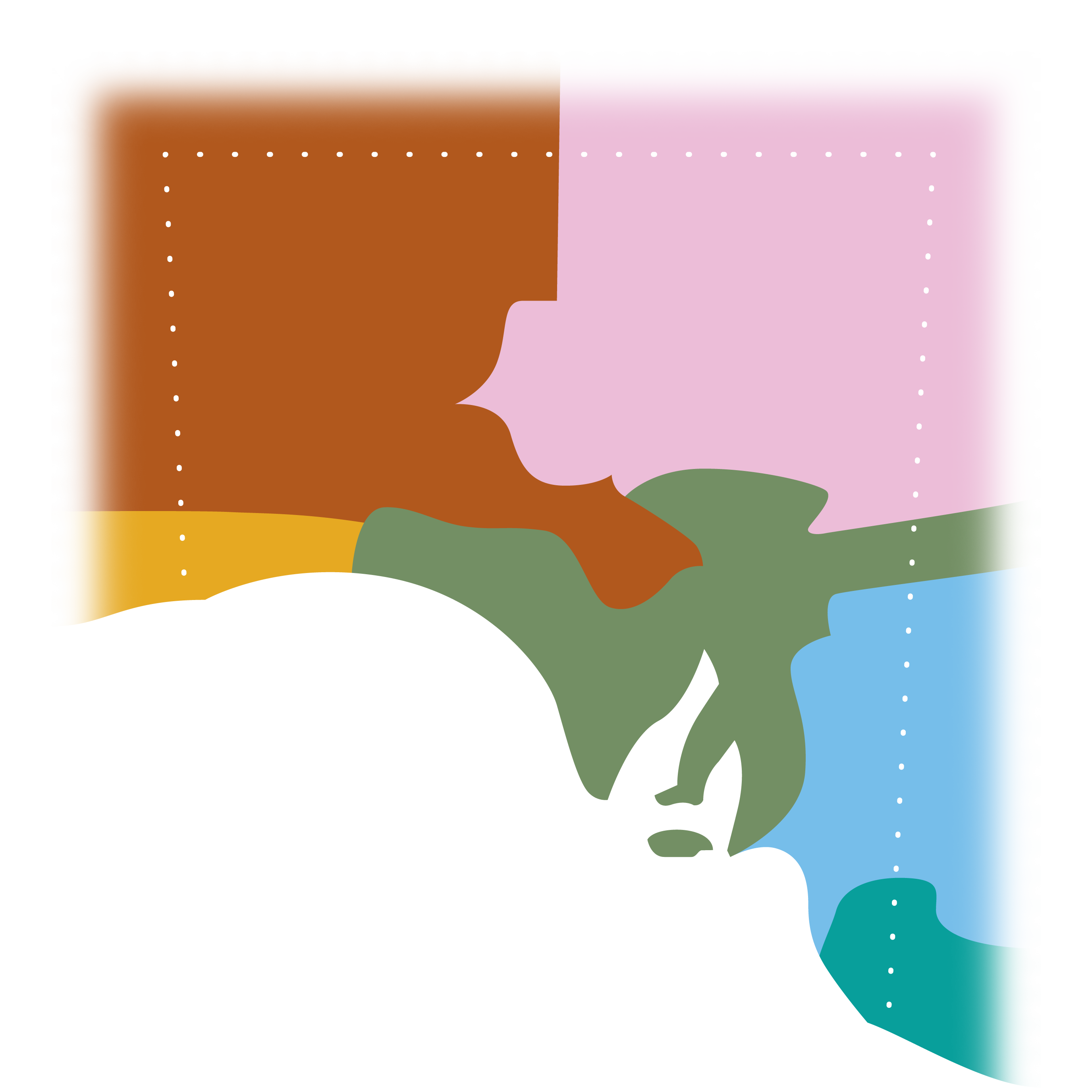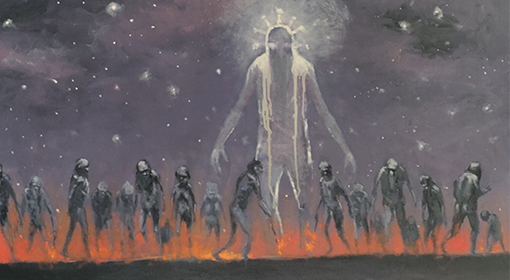Our Story
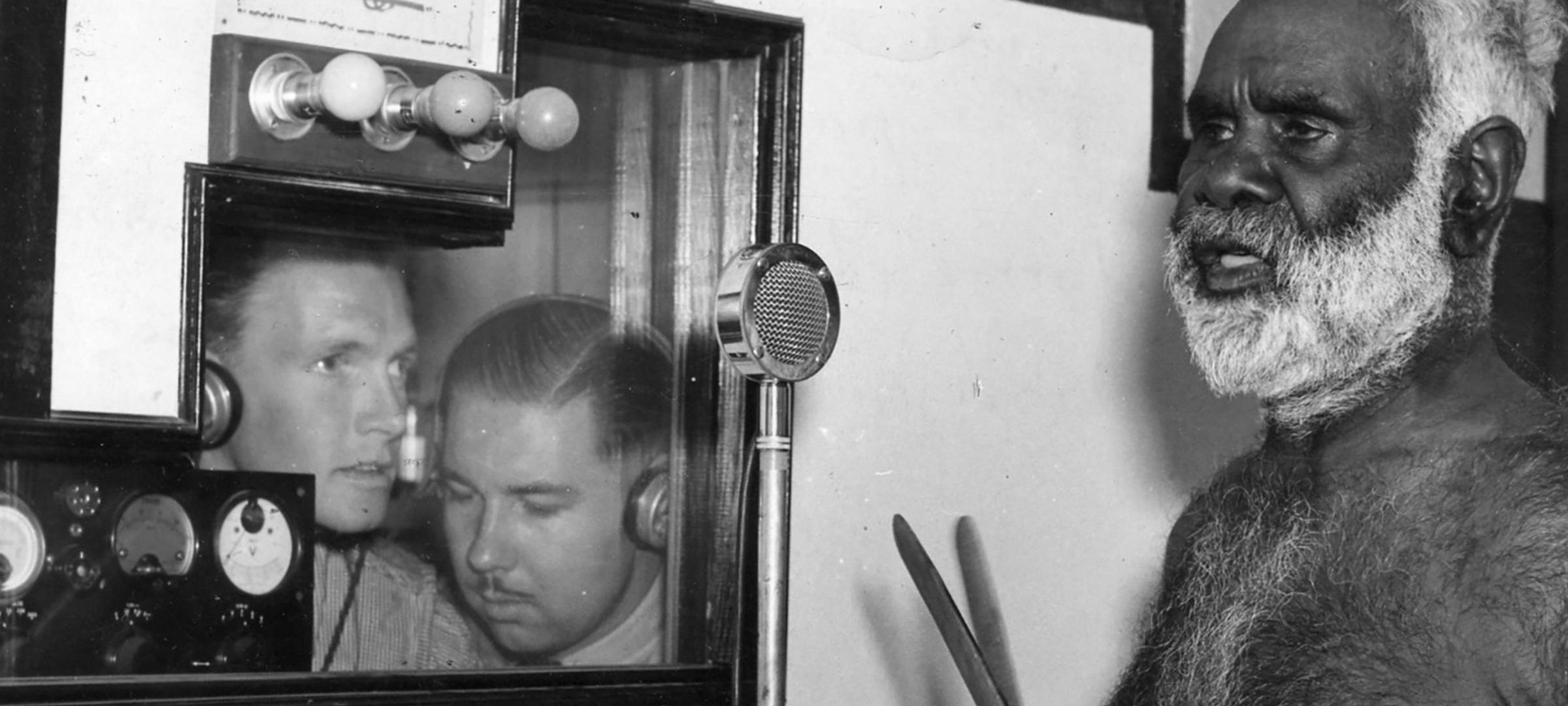
Milerum recording Tanganekald songs at 5CL in 1937. Image courtesy of News Ltd – Newspix
The focus of our story is keeping the Tanganekald language and culture alive. You will find in many places on this site mention of the great Tanganekald man Milerum. It is thanks to his foresight and efforts that an archive of records of language and culture was created in the 1930s. Tanganekald people want this to be far more than an archive sitting a long way from Country. We want this to be a living archive of our heritage that is easily accessible. We continue to use many Tanganekald words in our everyday speech but the stories and songs shared here deserve a wider audience and to be given the chance to take on new life. Through this cycle Tanganekald culture will be strengthened and will grow.
Welcome to the Tanganekald Living Languages project.Video thumbnail ‘Clyde Rigney with Milerum bust at Raukkan’ © Ben Searcy 2021
Uncle Major ‘Moogy’ Sumner introduces Tanganekald language and culture.
The distant origins of Tanganekald are told in the story of Ngurunderi, the great Ancestral Being who travelled down the Murray chasing Pondi, the Murray Cod, to the Lakes and Coorong region. Numerous placenames record Ngurrunderi's adventures as he travelled along the Coorong and the sea coast. The Tanganekald history of a deep-past migration of people down to the Coorong features in a song recorded by Milerum in 1937. The booming of the ocean waves startles a mob of people who arrive from the north and stops them in their tracks. 'Tangowalongan?' asks an old man, 'what will you do now?' The mob decides to stay at the Coorong beside and near the crashing Southern Ocean. This mob takes their name from the exclamation of the old man. They are Tanganekald.

Clyde Rigney with a bust of Milerum at the Raukkan Gallery. Image © Ben Searcy 2021
Reviving a language is a long and slow process - more like a marathon than a sprint. To be successful it requires input from right across a community or within a family, including young and old. Tanganekald are fortunate that our previous generations have left records of our language in wordlists, placenames, stories and songs.We are breathing new life into many of these words as we reincorporate them into our everyday lives. Anyone can do this. Tanganekald is a language of the Ngarrindjeri Nation. Three languages, Ramindjeri, Yaralde and Tanganekald, came together to form today's spoken Ngarrindjeri language. Historical records show that these languages were different but also shared much in common. There are benefits in reviving each of these languages and ongoing research into historical records will help each language and will also ultimately enrich Ngarrindjeri. Records of the Tanganekald language were made by a number of people during the colonial era, such as Christian missionaries who recorded language in the 1840s-1880s and Normal Tindale in the 1930s. A Ngarrindjeri language revival project was launched in the 1980s. This website adds to this history of language revival. This project has enabled the recovery thousands of more words, through archival research and interviewing people. Today, 25% of the Tanganekald language is incorporated within the Ngarrindjeri dictionary but without this research the rest of the language would be lost. Approximately 1700 Tanganekald words have been gathered as part of this project, with about 500 of these words presented on this website. Further funding is required to continue analysis and presentation of Tanganekald language materials. An example of how the Tanganekald language has been recorded can be seen below. This is a Tanganekald vocabulary card written by Norman Tindale of the South Australian Museum. It reads: 'ka:rupə'raki [karuparaki in today's spelling] basket; type made of two circular parts sewn around the edges and provided with hairstring net handle, decorated with feathers of a man's ngaitje [ngaitji in today's spelling](totem). Is worn on back of a fighter; it is a banner and is flaunted as a challenge. Tindale 1931 manuscript South East Journal p. 172. Tindale recorded thousands of words of the Tanganekald language and some of the neighbouring languages.
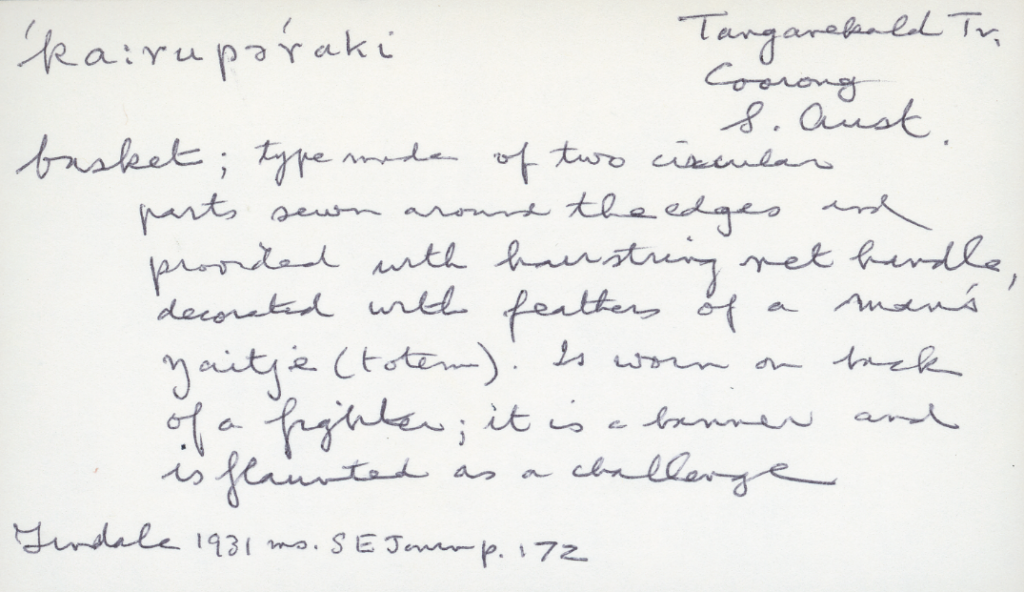
Example of a Tanganekald vocabulary card written by Norman Tindale of the South Australian Museum. Tindale 1931 manuscript South East Journal p.172, Tanganekald Coorong, South Australia.
AA 338/7/1/23/152 Norman Barnett Tindale collection South Australian Museum Archives
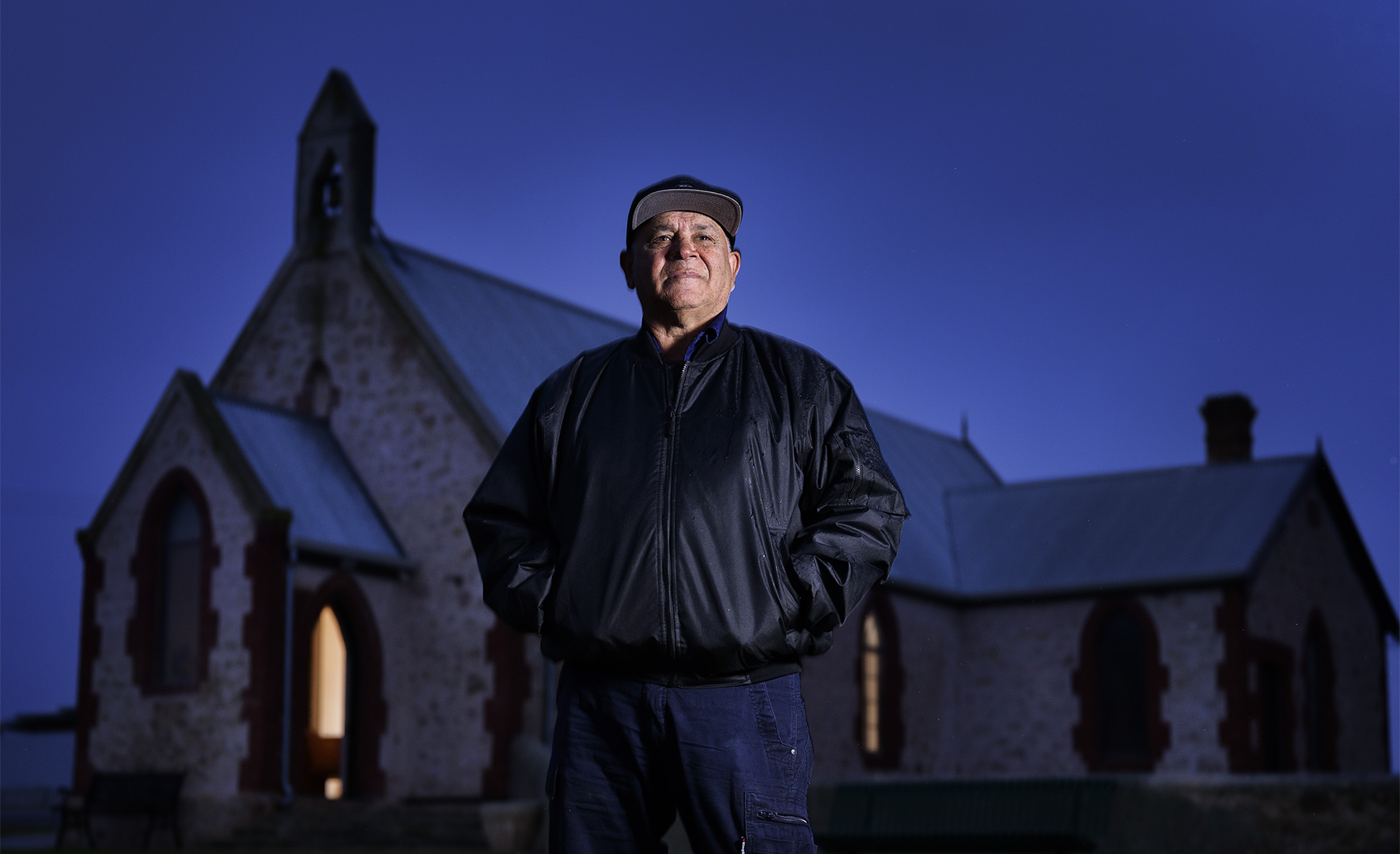
Clyde Rigney at the Raukkan Church, site of early language recording. Image © Ben Searcy 2021
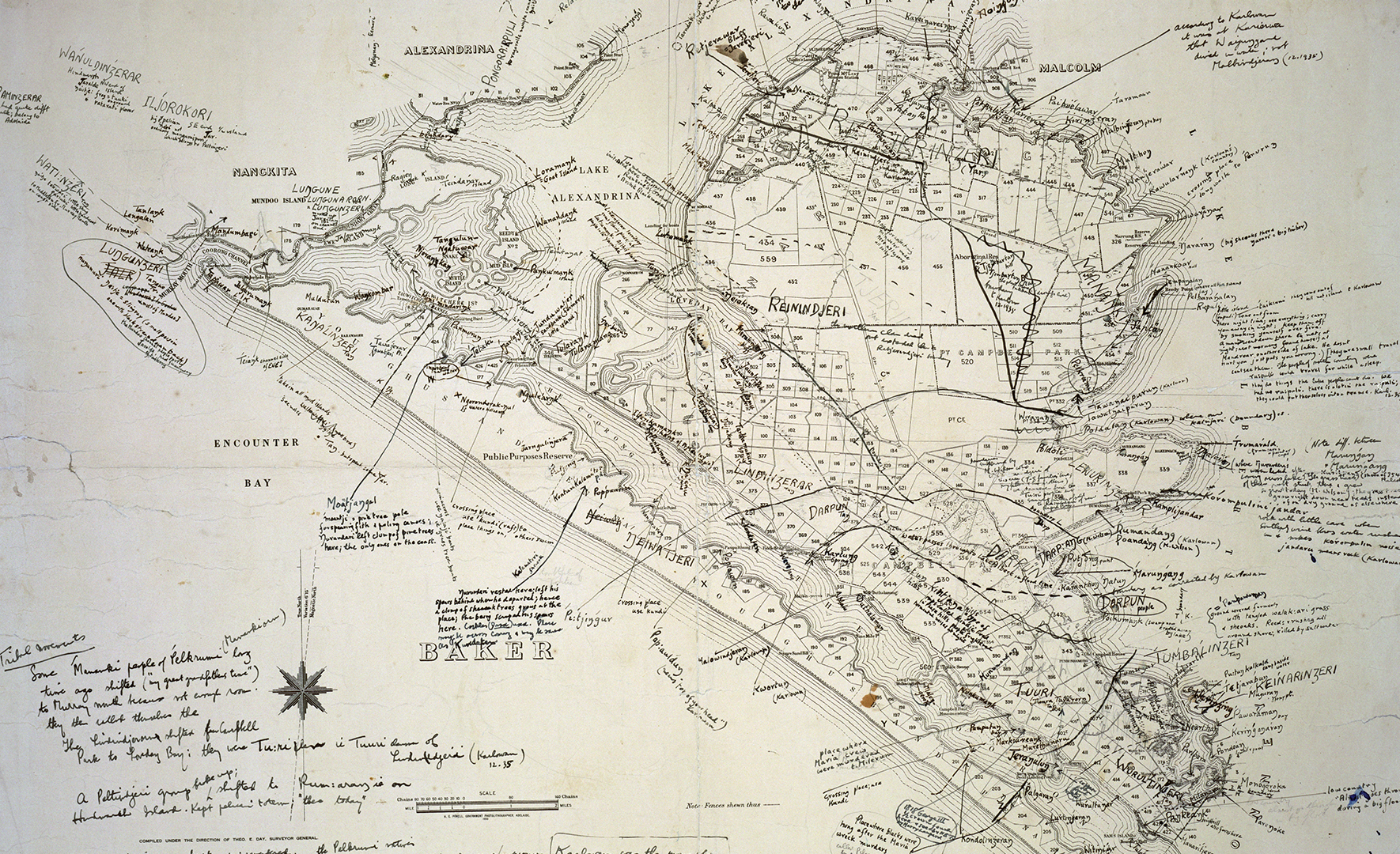
Section of a land survey map featuring handwritten Tanganekald placenames and notes by Norman Tindale. Hundred of Baker.
AA 338/24/6 Norman Barnett Tindale collection South Australian Museum Archives
An important part of reviving Tanganekald is providing language learning resources, whether to those who simply want to undergo an experience with the language or to those who wish to study the language in details and to speak it. The lessons here aim to cover this range of interest.
To start your journey with the Tanganekald language visit Lessons.
Tanganekald people invite you to experience, learn and use our beautiful language. You will begin by learning about introductions, some basic conversation, and colours and numbers. Try to follow the order of the lessons (although this isn't essential) and remember to try to involve others in your language practice, whether they are younger or older.

Uncle Major ‘Moogy’ Sumner recording Tanganekald lessons. Image © E. McCall 2021
